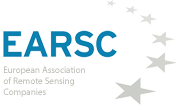In the EOCafe, “where the EO Community meet”, our subject for discussion had a more applications driven focus. This time it was dedicated to the use of EO information for the raw materials sector. “Raw materials” includes mining but also other means of extraction and even recycling as a means for production. Although, for the EO community, it could be obvious that EO data/information is useful for mining companies in several of its stages of operations, (from the exploration phase, environmental assessment & permits, to design, operations, mine closure and aftercare), for the mining sector there is still a long way to go for this relationship to succeed.
Margreet Van Marle, Consultant of Wildfires and Climate Resilience at Deltares, introduced the ESA funded project EO4RM project, which is a “best practice” project building upon the model which was successfully developed with the Oil and Gas sector some years ago. The best practice process identifies the demand through a list of challenges which the sector face. It then looks at what EO services can help overcome those challenges and subsequently the gaps and the barriers to uptake in the sector.
To put this into perspective, Reinier OOST, Product Lead at Sensar and Brendan Morris, Managing Director of LTMS (Lisheen Technical & Mining Services) gave examples as showcases. These showcased 15 EO products and their potential for the mining sector, including monitoring of tailings, subsidence monitoring of open pits and detection of environmental damage.
Even if EO technologies are not unknown to the mining industry, and especially the larger companies, there is still much room to increase their use, mainly through raising awareness of EO in the medium and small companies who have no knowledge or access to EO data according to Reinier. Once more, the main challenge EO technologies faces is awareness of EO and its capabilities along with the need of skills and expertise to be built within the mining companies. However, they are not the only ones. To go deeper, Margreet explained that even if an EO company with expertise provides high level products but does not understand the demands of the mining company, then the product will not fit the needs and meet the mining company needs. Vice versa, if the mining side lacks skills and knowledge, it will be challenging to make accurate requests, as its understanding in the EO technology such as processing, and interpretation of imagery could represent a barrier to procurement. According to Reiner, the image of EO in the mining sector is still science and research-based. Whilst this might have been true 10 or more years ago, the EO sector is now much more business orientated.
Reiner mentioned regulations as a driver. If norms were put in place under a regulatory framework at an EU level, this could enforce the predictability on mining management with the use of new technologies, amongst them EO, that is not there at the moment. In addition, the audience raised the topic of safety as an important topic in the mining industry, which should be put more attention worldwide as a legal obligation for the industry to invest in technologies to guarantee safety monitoring approaches.
Although international policy actions on safety are in force, these are under the umbrella of environmental protection, such as UNEP setting global environmental agenda including sustainable mining, the use of technologies for personal safety is still weak. For the record, the EU counts with a Directive[1] establishing minimum requirements for improving the safety and health protection of workers, however, it dates from 1992, which consequently EO technologies are not considered as a resource to enforce this legislation. It could be time to consider the use of EO in another piece of EU legislation to improve its enforcement.
Validation emerged as another barrier for the sector i.e. how can the products and services be shown to meet acceptable standards. Data is needed on a global basis to raise confidence in the services which are offered. Both some form of certification of the processes as well as validation of the satellite data will be necessary.
In conclusion, the main question is how these two sectors can develop a more fruitful relationship? The aforementioned oil and gas (O&G) sector created an informal advisory group with the EO sector called OGEO and which later became a sub-committee under the O&G umbrella association the IOGP. Can similar structures be envisaged under the mining and raw materials sector? Both Reiner and Brendan thought that this would be possible under either a European or International umbrella – which seems like a good recommendation, endorsed by the EOcafe participants, for the next steps.
Geoff Sawyer & Sandra Alvarado
For further reading:
Mineral Exploration from Space
https://www.esri.com/about/newsroom/arcwatch/mineral-exploration-in-the-hyperspectral-zone/
[1]See Directive 92/104/EEC https://eur-lex.europa.eu/LexUriServ/LexUriServ.do?uri=CELEX:31992L0104:EN:HTML

This page has no comments.